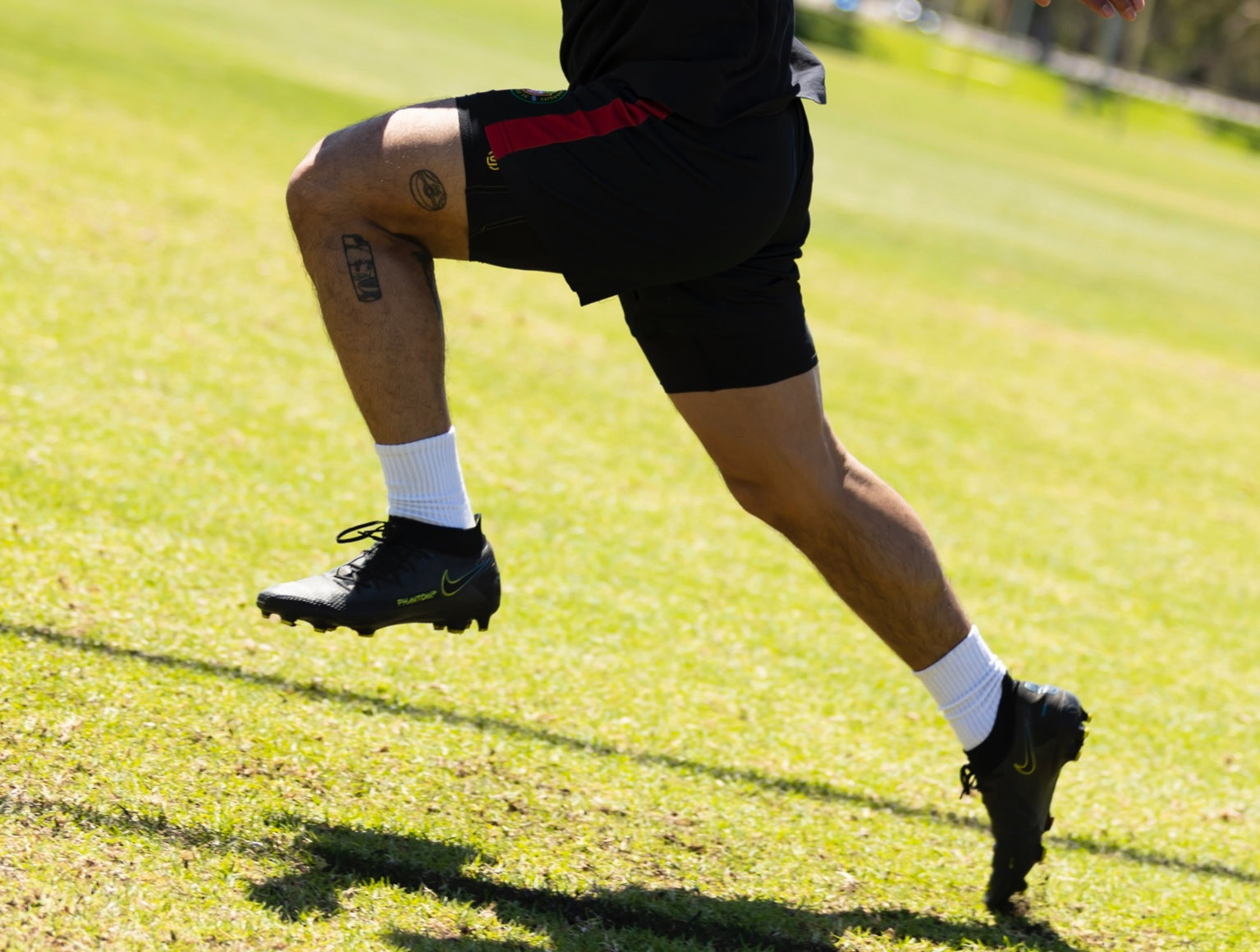
Hills Sprints: The Most Underrated Tool For Speed
Hill Sprints & Speed
Just as we will within the Application Of Program Design seminar, in this article i want to run over a few of the benefits and why this is such a quality piece to add to your program design in the pursuit for faster athletes.

1. Strength
Think about speed on one end of a continuum. Then strength on the other. By setting up environments likes sleds, banded sprints and drills, hill sprints and so on. We slow down the speed or velocity of the exercise. Causing a longer contraction time in those tissues of each leg on each stride. Especially somewhere like the hips in these longer contractions it can help us push a bit more of a strength adaption. In terms of the ankle complex, we'll talk about that in the stiffness section.
2. Ground Contacts
As mentioned above, the time the foot spends in contact with the floor is increased. By doing this and having the intent to move at high speeds we create some opportunities to work on a few things.
Apart from the next two points the ability to spend longer on the ground will provide opportunity to push into and spend more time in this late stance or toe off position as we reach the end of a stride. A valuable piece of max velocity, but something that if we try to internally cue can just cause more harm then good. Due to the increase in the incline, by the athlete spending more time through that mid to late stance it forces them to create the space and opportunity for a better switch. You'll see it in videos where athletes who don't have that ability to drive well through the floor aren't able to get off the floor enough and stumble a little between strides.
3. Switching
Following on from the above point with the necessity for longer ground contacts to keep our speed going up the hill.
This means that as we go up the hill our space between the ground and our hips (where we switch from) decreases. To create this space, to prepare for the next stride well, to allow their speed to continue to build up the hill, we must not only attack the floor well. But also switch efficiently. Another example of an exercise that becomes an external cue in being an environment that forces a skill or quality we want to improve.
4. Stiffness
This is getting a lot of craze and attention now, and rightfully so.
But it's important to know why we are chasing this stiffness within the ankle complex.
The reason is the ability to absorb and tolerate the ground forces for the hips. By having an ankle that is stiff upon hitting the ground it means it doesn't collapse or deform. It's means it doesn't close down the space for us to switch within and it doesn't lower the output that the hips can have on our sprinting.
Hopping, bounding, leaping are all pieces we use within our program design at Perform HQ. But, it's important to put in doses of the real thing. Sprinting. Hill sprints is that perfect entry point in the preparation phase that has probably the closest effect and transfer to sprinting.
5. Effort & Intensity
As the athlete goes up the hill, if they drop their effort and intensity it instantly shows.
Their speed drops dramatically.
Check here in this video we posted on instagram the very last clip. Take note of the 4 athletes racing up the hill. But mainly the ones that slow down. Either effort dips or their technical aspect is suffering and they can't maintain their output. This provides feedback to the coach instantly to where it's fatigue, technique or just overall effort.
Keen to learn more thought processes, principles and drills like this?
Have a look at our upcoming seminars.
Written by Isaac Davidson.